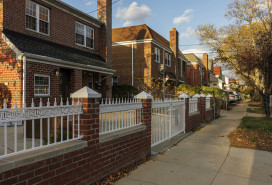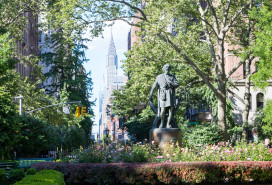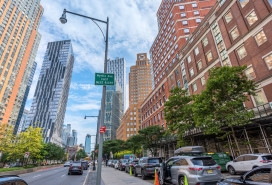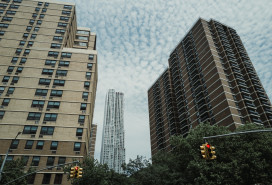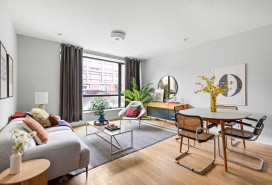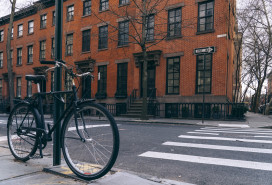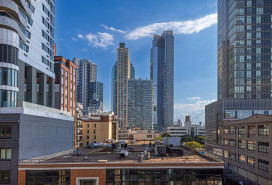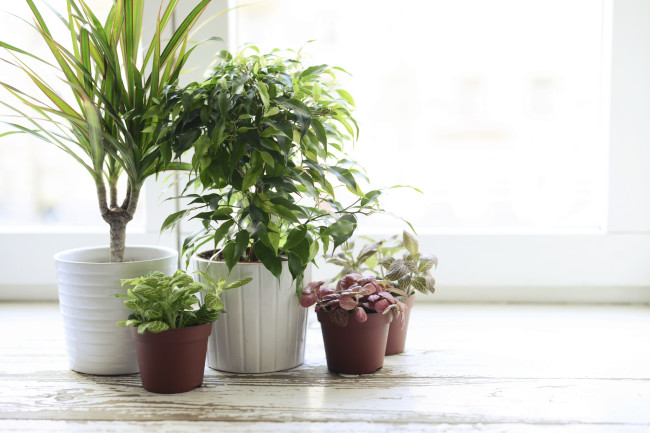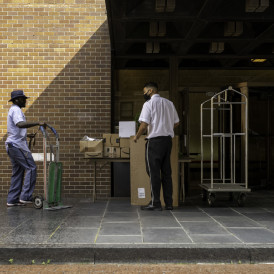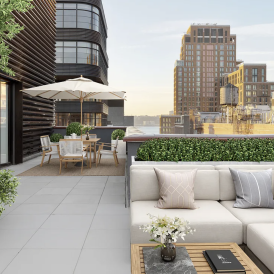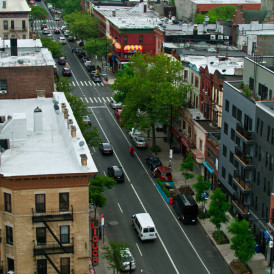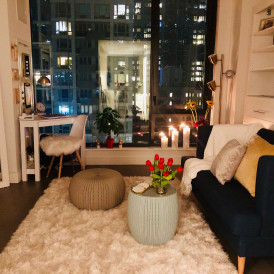Tips on how to start—and keep alive—a NYC apartment garden, from a Brooklynite with over 500 plants

The bedroom at Summer Rayne Oakes' Williamsburg apartment.
Summer Rayne Oakes
Summer Rayne Oakes lives in a 1200-square-foot two-bedroom loft in Williamsburg that's filled with over 500 plants. And, no, that's not a typo.
"I was very lucky to move into what's now a really hip area 11 years ago," says Oakes, a former model and sustainable-fabric-and-food activist. "The downside is I don't have a plot of land."
So, Oakes, who grew up in rural Pennsylvania, transformed the inside of her home into a greenspace. She even turned part of a closet (with a window!) into a vegetable and herb garden, where she grows everything from pineapples to microgreens.
Now she's nearly out of planting space, and she's looking to expand to a community garden. "The truth is my apartment isn't always the most optimal space. I do have north- and south-facing windows so I get good light during the summer more than the winter, but I need to augment in the winter with more light and humidity." (For now, she uses grow lights and humidifiers.)

And in case you're wondering, she says she spends about a half-hour every day watering her plants. Some have built-in irrigation; an expandable 150-foot hose helps, too. (Editor's note: Her landlord doesn't mind and, in fact, asked if he could bring his children over to take a photo in front of her vertical garden.)
"Once every year-and-a-half, I go on a repotting binge, which I'm in now," she says. "That takes about two weeks. But normally I just propagate them as they go." FYI: Propagating is the process of creating new plants via seeds, cuttings, bulbs and other plant parts.
Aside from rent and food, Oakes says plants and their maintenance are her third largest expense. "Last year, I spent a little over $100/month acquiring and maintaining plants. It varies yearly though depending on the projects I undertake, but really maintenance, aside for some new pots here and soil amendment there, doesn't cost very much."
Plus, many are given to her as gifts. When friends come for dinner, the sustainable clothing activist asks them to bring San Pellegrino or a new plant. "It's fun for them to see how their gifts grow over the years," she says.
The greenery has helped her create an oasis, she says. "The apartment would feel like a neutered old building without them."
While it's unlikely any of our readers will find themselves growing 500 plants anytime soon, we asked Oakes to spill some of her green-thumb secrets to those just trying to keep a few plants alive in this city of ours.
Why do you think it's important to own plants in hectic NYC. And how is it worth the work it entails?
My home is really regenerative, in part because of all the plants. It's the way I've been able to survive in New York for so long and maintain my sanity.
I've opened up a space to do meditation here on a monthly basis, and people's mouths drop wide open when they see the space. Green is a calming color. Even if you grow up in the city, there's something on a cellular level that makes you want to be around plants. I think in New York, especially, where there's a lot of uncertainty, and people are always shifting jobs, relationships and apartments, that causes an underlying stress. Caring for plants is grounding and calming.
And I know that when people see that I can keep 500 plants alive, they realize they can keep one or two alive. I also think there's a plant for everyone, but people sometimes get the wrong one for their lifestyle and their space.

What's the biggest challenge for an NYC resident who wants to keep plants?
It depends on where you live...That's what makes NYC so interesting. If I had a west-facing window, rather than north- and south-facting, for example, I probably couldn't have 500 plants in my apartment. There are so many factors to contend with, maybe you live with other people... Do you live in a basement and only have a little bit of light? The biggest challenge is those factors. Plants need nutrients (soil, light, humidity).
Heat in NYC can get very hot and dry, so I augment the winter heat with a humidifier. Ones that prefer humidity, I put around there.
Is it expensive?
Not really, once you have your soil, your plants etc, as long as you propogate plants you're not buying a lot. Obviusly if you go big like me, after rent and food, plants are the biggest expenditures. When friends come over for dinner, I ask them to bring a potted plant. I'm still accepting plants from friends.
How do you pick the right ones?
It's the consideration of light, humidity, and internal realization. Typically, if you want to know which is going to be good for you, just ask people at a plant shop or at a farmer's market; Union Square, in particular, is great, especially in the summer and into the fall [and] there are lots of plants that are low cost, and they all are happy to help. The biggest mistake: People choose a plant because they like the look, but don't have the light to keep it healthy.
All plants like light. How much light depends on the plant species, so you need to consult with a plant aficionado or expert if you want clarification. General rule of thumb, however, is that any type of food crop—from herbs to greens to tomatoes—like a ton of light, as does succulents, and cacti, and many flowering plants. For many plants, you can get away with a little indirect light, and some are more tolerant to lower light conditions, but "tolerant" is the key word here. If I say you can "tolerate your colleague smacking gum and gossiping all day behind your ear," it doesn't imply that you "love" or even "like" it.
So, give your plants some light or, at least, if you're thinking of moving into a new home or looking at your current home and thinking of getting plants, then know which way your windows are facing and what kind of light you get. That will be one indicator to help dictate what kind of plant you should get!

How do you keep plants alive in over-heated/too drafty, too-small or too dark spaces?
You need to augment with LED grow lights in some cases, and for plants that like humidity, it helps to put them near a humidifier in the winter.
Depending on what kind of plant you get, it doesn't need to take up space. Plants kind of conform to their enviroment. Succulents are easy to propagate. Or consider an air plant, which doesn't require soil; you just need to soak them once a week. You can hang them, or just put them in a bowl or small vase. I have a bunch coming out of bowls and cups.
You Might Also Like

